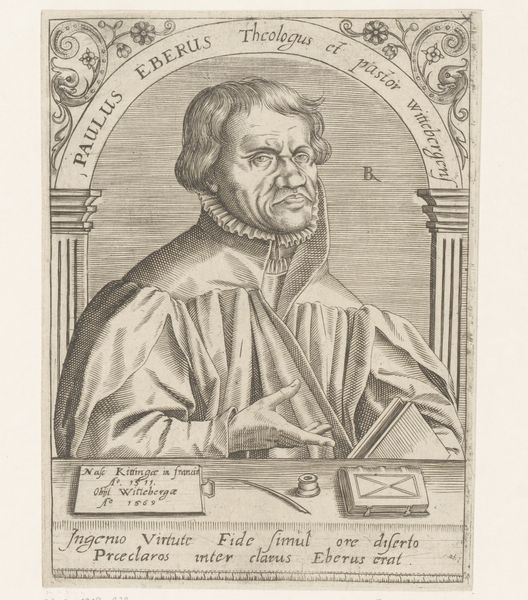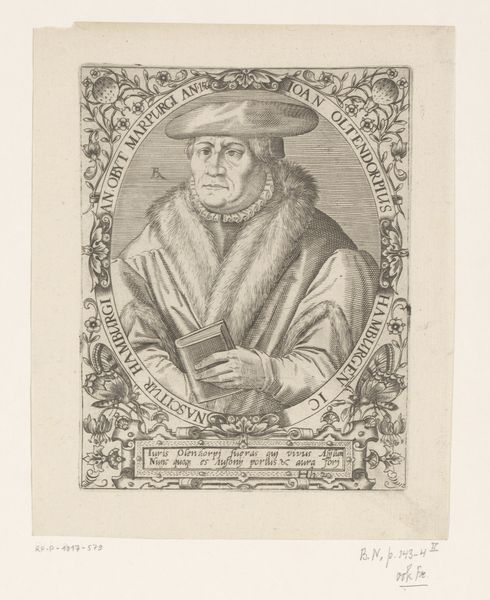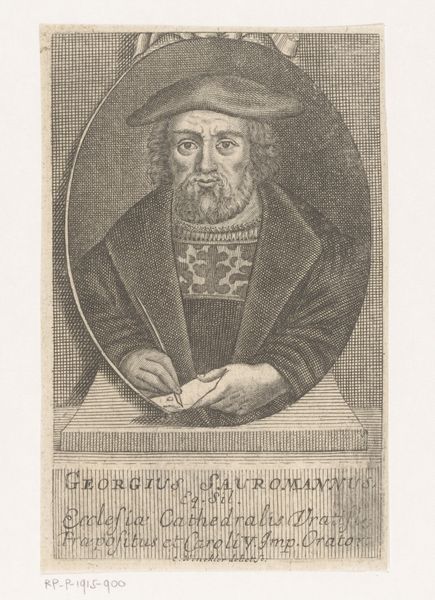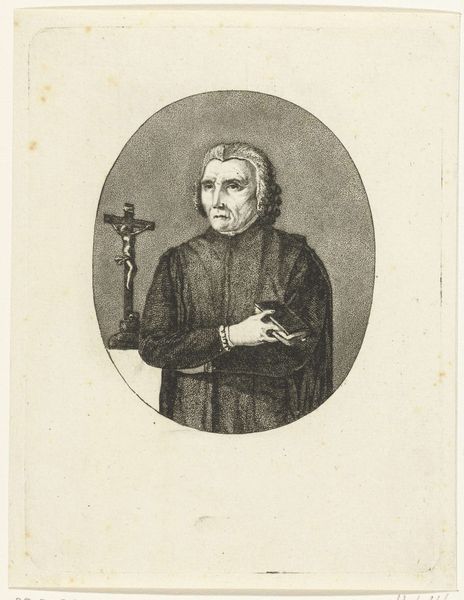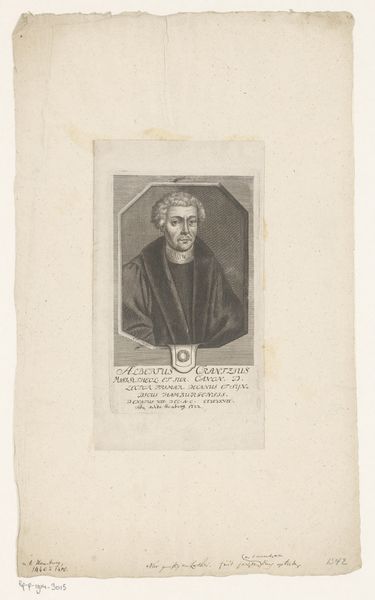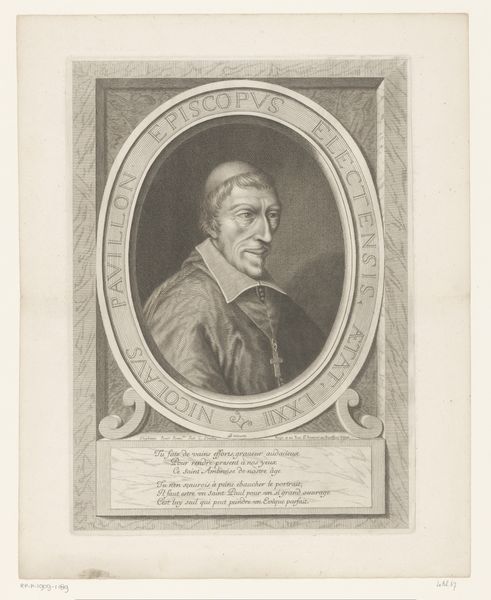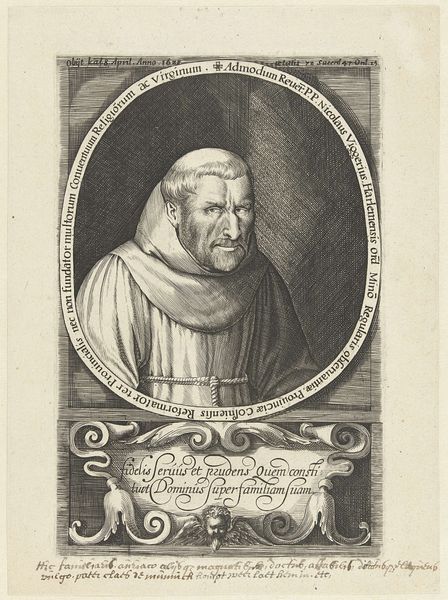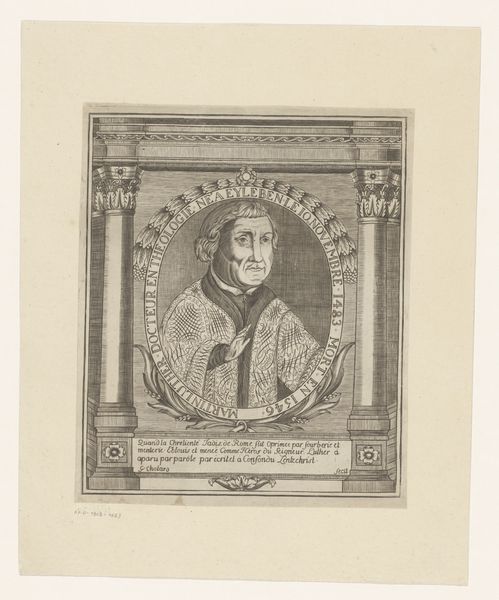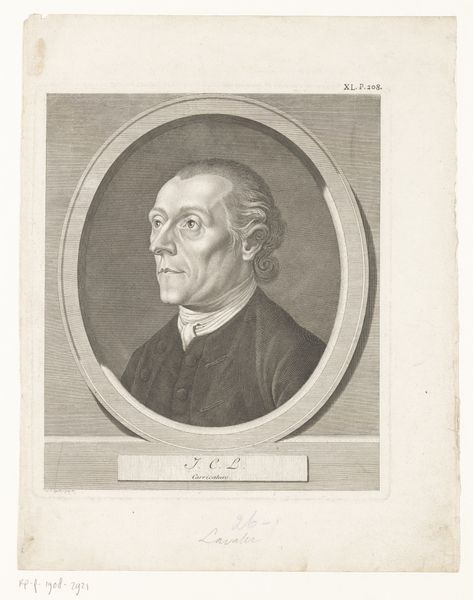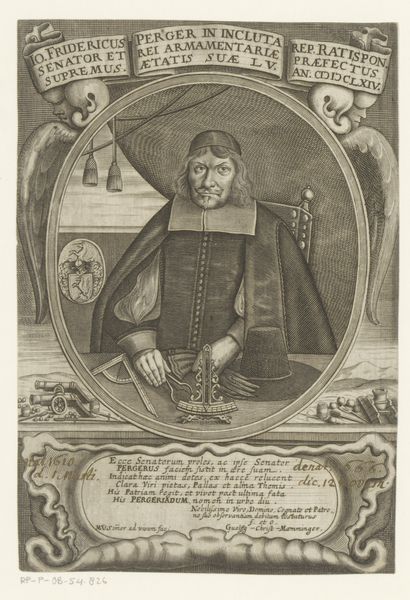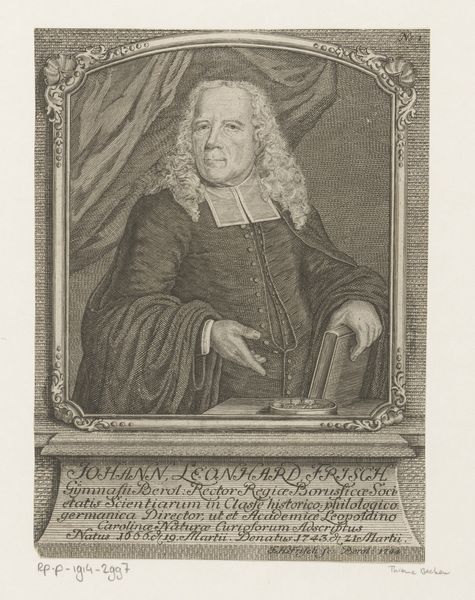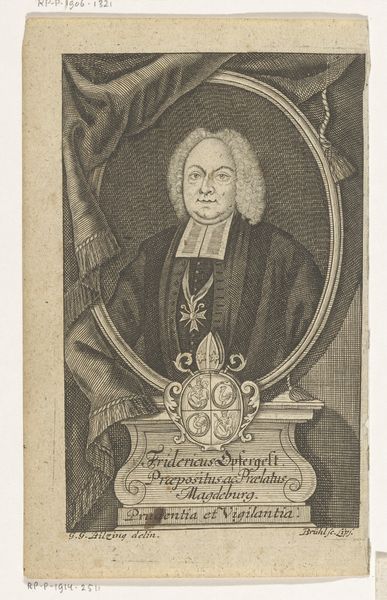
engraving
#
portrait
#
baroque
#
old engraving style
#
history-painting
#
academic-art
#
engraving
Dimensions: height 151 mm, width 91 mm
Copyright: Rijks Museum: Open Domain
This portrait of Martin Luther is an engraving, made by C. Zinck on paper. Look closely, and you can see the matrix of tiny lines that build up the image. The process of engraving involves using a tool called a burin to carve lines into a metal plate, which is then inked and printed. The density and direction of these lines create the illusion of shading and form, and the quality of the final image depends heavily on the engraver’s skill, and physical labor to create the printing plate. Engravings like this were relatively easy to produce, and helped to spread Luther's image and ideas widely, contributing to the reformation's success. The clean lines and precise detail give the portrait a sense of authority, befitting its subject. The print also speaks to the rise of print culture, and the mass dissemination of images. Considering the materials, making, and historical context of this portrait expands our understanding of how artworks convey meaning beyond their subject matter. It challenges the traditional hierarchy between fine art and craft, showing how technical skill and social impact can intertwine.
Comments
No comments
Be the first to comment and join the conversation on the ultimate creative platform.

